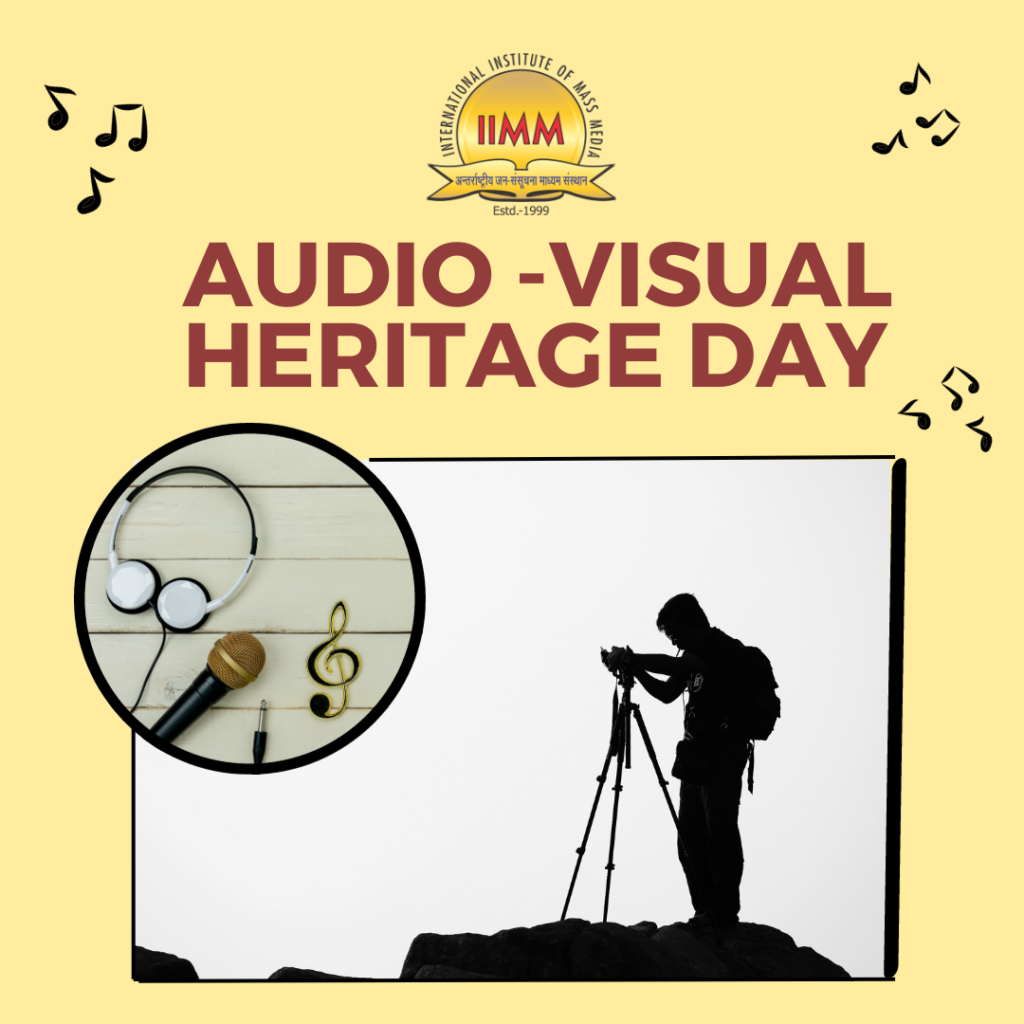

Audio-Visual Heritage Day
Oct 27,2023

The World Day for Audiovisual Heritage takes place every 27 October. This commemorative day
Every year, on the 27th of October, we celebrate Audio-Visual Heritage Day, a dedicated occasion for recognizing and safeguarding our invaluable audio-visual treasures. These recordings serve as remarkable testaments to history, possessing the transformative power to shape our future by drawing from the narratives of the past.

Audio-visual heritage is an expansive domain encompassing films, radio broadcasts, television programs, music recordings, photographs, and much more. These records stand as the most reliable gateways to our past, offering profound insights into historical moments and artistic creations. Even today, we have the privilege of preserving the great speeches and last words of eminent leaders and personalities in audio-visual formats. This ensures that future generations can delve into history and gain invaluable lessons from it.
Audio-visual heritage transcends time, preserving stories that bridge generations. Thanks to technological advancements, we can now record and preserve content of impeccable quality, thereby inspiring the younger generation. It’s a widely recognized fact that young filmmakers frequently adapt cult movies and draw from old melodies and folk tales for inspiration in their modern works. This fusion of the past and present enables artists to craft thought-provoking content from a fresh perspective. However, creators often encounter restrictions due to copyright issues when using existing recordings as muses. Institutes such as libraries, museums, and archives shoulder the responsibility of making audio-visual heritage accessible to the general public. They serve as invaluable reservoirs of intellectual property. Researchers and educators are the primary beneficiaries of these preservation efforts. They use these records to gain a deeper understanding of human history, culture, and society, as well as to disseminate this knowledge to future generations.
Yet, there are challenges associated with preservation. Despite the efficiency of current technology, unavoidable obstacles such as data corruption and the loss of content stored on hard drives and memory cards can arise. Hence, it is imperative to create backup copies and address potential challenges through digitization, legal reform, and advocacy.
In conclusion, safeguarding our audio-visual heritage is of utmost importance. It allows us to reflect on the past, drawing inspiration and a sense of connection to bygone eras. It is our duty to protect these timeless gems, leveraging technology to enrich our cultural and heritage tapestries.